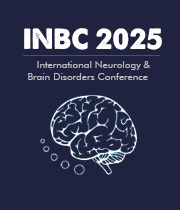Title : Mitochondrial DNA in glioblastoma: A systematic review
Abstract:
Glioblastoma Multiforme (GBM) is the most aggressive primary central nervous system cancer in adults, with limited treatment efficacy and poor prognosis. Mitochondrial genomics is a rapidly expanding field and variations in mitochondrial DNA (mtDNA) have been implicated in GBM metabolism, progression, and treatment response. Understanding these mtDNA abnormalities may provide insight into GBM pathogenesis and the development of novel biomarkers and therapies. Therefore, the objective of this systematic review is to provide a synthesis of the current data of mtDNA biology in the context of GBM.
This systematic review searched MEDLINE, Embase, Scopus, and Web of Science from inception to October 2023 for primary research studies in English. Two independent reviewers screened for eligibility in Rayyan using a defined criteria. Data extraction was completed in duplicate in Excel. Risk-of-bias was assessed using the Joanna Briggs Institute tools. Results were synthesised as a narrative. Meta-analysis was not performed due to significant heterogeneity.
This study identified 9881 records, 35 of which were included. Studies were thematically classified into gene expression (23%, 8/35), copy number (51%, 18/35), epigenetic changes (11%, 4/35), and mutations (43%, 15/35). Some studies addressed multiple themes. While some studies reported low mutational burden in mtDNA, others identified pathogenic variants, particularly in the D-loop and mitochondrial respiratory chain genes. mtDNA copy number was reported between x25 higher and x10 lower in GBM compared to controls. mtDNA copy number and mutations demonstrated potential as biomarkers. Alterations to mtDNA modulated GBM responses to radiation therapy and various chemotherapy drugs, including temozolomide and cisplatin.
Multiple mtDNA alterations are seen in GBM and these are linked to clinicopathological characteristics, such as survival time and therapeutic response. These findings highlight mtDNA’s potential as a biomarker and therapeutic target. Further research is warranted to clarify its clinical utility and to develop mitochondria-targeted strategies in GBM treatment.



